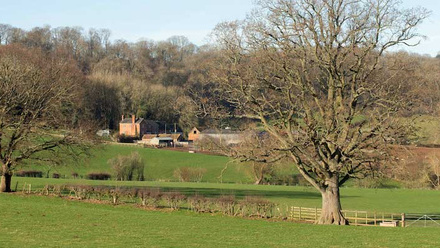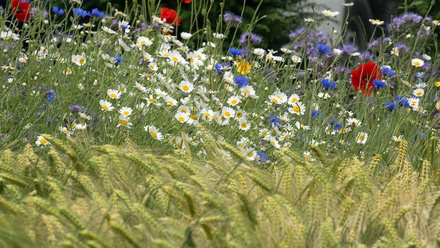ELMs Case Study: St Neots, Cambridgeshire
Summary
- Small arable family farm
- Slightly unusual due to the farmer also being employed by a distributor company providing a range of products, services and advice to farmers
- Integrated approach from a farming point of view
- Currently in Entry Level and Higher-Tier Countryside Stewardship
- Wide range of environmental initiatives across the farm
- Advised by agronomist and environmental specialists
- Uncertain about how ELMS will work
- Looking for flexibility which is not necessarily in current schemes
- Can see a number of areas for ELMS
- Concerned about the practicalities of the scheme for a highly productive farm
Background and farm description
This is a 240-acre predominantly arable farm based near St. Neots in Cambridgeshire. The land is Grade 2 chalky boulder clay. The farm has one field of pasture that is in long-term stewardship and is a County Wildlife Site.
The rest of the farm has been in Countryside Stewardship since 1992 when the first scheme became available and has rolled on ever since in various guises. The farm’s current schemes, which includes Entry Level and Higher Tier Stewardship, will run out in 2022.
Family farm
The farm was purchased by the farmer's father and uncle in 1954 and the family have been there ever since. The farmer has been farming it since 1980 and it is now jointly owned by him, his wife, and his mother. It’s a small business with no borrowings and is tightly managed as a sustainable business.
He also works as a Regional Technical Adviser for a distributor company. He is currently involved with a project with the company called Green Horizons looking at future paths for the organisation.
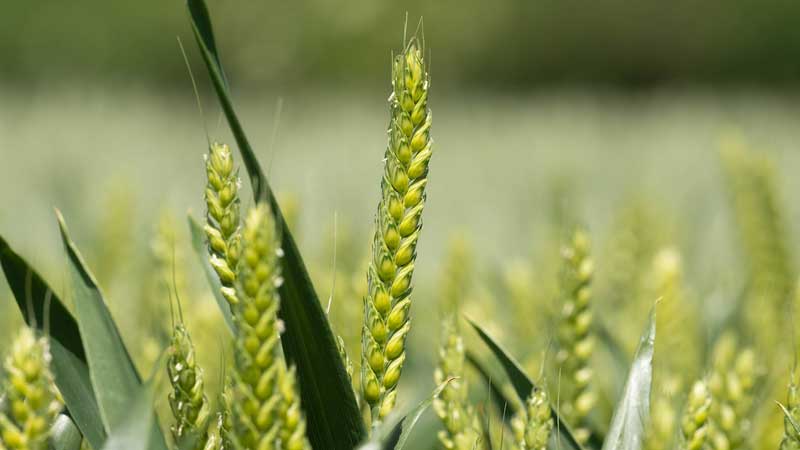
For 15 years the farm was run on a contract farming agreement in conjunction with a neighbouring farm, but this arrangement has now come to end.
However, the farm works in cooperation with a local farmer, which enables the two enterprises to spread machinery costs, particularly at harvest time. This also means that the farmer gets access to some machinery that would not typically be available on a farm of this size.
Wide range of crops
They grow a wide range of crops including spring and winter barley, field beans, oilseed rape, and winter wheat. The wide variety of crops on such a small farm is partly a result of the availability of field-scale storage, and partly because the farm can act as an extension of the distributor company's trials programme at Stow Longa and offer field-scale trials.
This enables them to look at a variety of things including cover crops, variable rates, and fertiliser as well as use of new agricultural machinery. Both the farmer and his distributor agronomist are on the BASIS register as well as FACTS, they have both also completed the BETA Conservation Management Certificate, and are involved in ongoing CPD.
They have been working with BASIS to ensure recognition of the ongoing training in Integrated Pest Management (IPM) which is being undertaken alongside general environmental training delivered by the company’s in-house experts.
Environmental activity
The farm has a long history of involvement in Countryside Stewardship schemes, initially centred around its one 15-acre field of pasture, but now involving the whole farm in Entry Level and Higher Tier Countryside Stewardship. It is also a LEAF demonstration farm and has been since 2000.
SSSIs
The farmer believes that the farm lends itself to involvement in Countryside Stewardship due to its location. It has a woodland which is a Site of Special Scientific Interest (SSSI) on its southern boundary.
A reversion area has been put in to buffer this area, although he points out that this was a fairly unproductive area to begin with. However, this does mean that it now provides additional habitat.
This area does require ongoing management to ensure it is not taken over by the bordering woodland. Not far from the northern boundary is Grafham Water and all the water from the farm will eventually flow into the reservoir, placing them in a closed catchment loop.
Water – or anything else leaving the farm through run-off – can go through several SSSIs: Grafham Water, or Paxton Wood and on into Paxton Pits Nature Reserve.
This is something that the farmer has to be very aware of in terms of environmental management. All the fields are under-drained and have drainage ditches. The adoption of field margins as part of environmental management was undertaken very early on and some of these were sown with grass and flower mixes and specific wild bird mixtures.
In some areas of margins which are well established they are beginning to see new species that were not sown such as orchids, cowslips, and violets.
Margins
Some of the well-established margins are beginning to look a little ‘tired’ and the farmer is conducting research into refreshing these. This will cover issues such as how you re-establish flowers into an existing grass sward and when re-sowing how you prepare the seedbed, when to do it and what specifically should be planted.
The farm is carrying out a number of trials on margins in conjunction with both the distributor and the Processors and Growers Research Organisation (PGRO).
The farmer is very happy to carry out these trials which can be conducted at very low cost. He is also at pains to emphasise that these trials and the practices arising from them are integrated into the overall agronomy and management of the farm.
Both the farmer and his agronomist make the point that margins or other areas sown with wildflowers cannot simply be left to themselves. They need to be managed just like other areas of the farm, to ensure successful establishment and continuing growth.
Having been in Countryside Stewardship for a number of years, they do feel that some areas will need to be renewed in the near future.
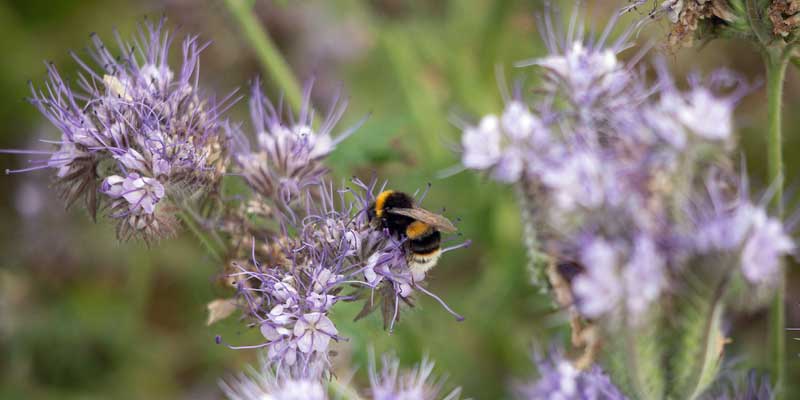
He has also considered looking at the planting of margins which can still be used as ‘turning areas’ thus ensuring that the unproductive headlands are not extended. These ‘turning areas’ would include tougher species which would still deliver an environmental benefit and help to prevent run-off.
Much of the work that is carried out on the farm, and could potentially fall within a future ELMS scheme, is not currently paid for. The farmer and his agronomist see this as part of what they do rather than an ‘add-on’.
Access and information
The farm has a number of bridleways on it providing public access. As a LEAF demonstration farm, it features information boards for the public. They see the provision of information as a way to ensure people keep on the paths provided and to give additional information.
In fact, there have been very few opportunities for environmental activity on the farm which have not been acted on. The one exception was the possibility of rainwater harvesting which did not stack up in financial terms.
Role of the advisers
In spite of his role as a Regional Technical Adviser with the distributor company, the farmer also needs help and advice both with his agronomy and with the implementation of Countryside Stewardship schemes.
He has been working for 17 years with his agronomist and is also able to call on the environmental team at the distributor which offers paid consultancy.
Both farmer and agronomist support the view that the agronomist is an integral part of the farm’s management team and not just someone who visits, inspects the fields and provides advice on crop protection.
He or she must understand the business and the long-term planning, including the environmental land management and provide a ‘sounding board’ for a wide range of issues on the farm.
The farmer says that all aspects of the advice he is giving have a definite impact on the success of the business. The conversation with agronomist and farmer inevitably touched on the role of the distributor company and other major agronomy companies, which goes well beyond just selling products or even providing agronomic advice.
Without companies such as these, they could not see where long-term R&D and trial work would come from.
Advice on stewardship
Although the farmer has been involved with stewardship schemes in the past, he does not have the capacity or the knowledge to ensure that he is up-to-date with the schemes and that the farm is fully compliant.
For this he relies on outside advice. In order to move into the era of ELMS, he feels that they need specialist advisors to guide them. Additional issues such as carbon calculations will require full-time professionals to help with the results.
In general, the role of agronomists has changed hugely over the past fifteen years. With the move to digital and precision farming, it is impossible for professionals – whether farmers or agronomists – to absorb all the necessary information. Modern agronomy and land management also require a much greater degree of forward planning.
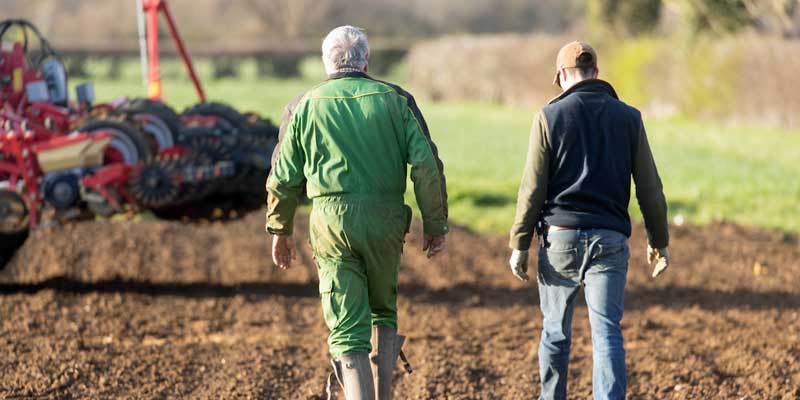
The agronomist believes that the current generation of agronomists may need to change to be more of generalist ‘land management’ advisors who act as a conduit and are able to call on the services of specialists in environmental schemes and specific aspects of these schemes.
Where the agronomist's company would differ from other networks that are accessing outside advice on environmental initiatives and stewardship schemes, is their ability to put this advice alongside its trials, R&D work and general approach to precision farming.
Integrated Farm Management
In other words, they are trying to provide an Integrated Farm Management package that takes into account all factors. Their trials and R&D are multi-factorial taking into account cultivation techniques as well as different products and varieties.
The distributor agronomy company already provide advice on the environment as a separate paid-for service and has a distinct role for this.
This is one of the areas where the return on investment in advice is clear, given the amount of money farms can lose through non-compliance.
The company is also considering how its service will integrate with the advice provided by third parties including the water companies, Catchment Sensitive Farming and organisations such as the RSPB.
The farmer has certainly had productive relationships with advisors from Catchment Sensitive Farming and those employed locally by Anglian Water in the past.
The agronomist says: “In the future, I think agronomists will need to have more expertise in the environment and environmental schemes, as our experts will simply not have enough time to advise everyone.”
How ELMS might work
While he has clearly been giving thought to what ELMS might involve and has been part of Agrii’s discussions and training on the subject, the farmer has made no decisions on what will happen after 2022 when his current Entry Level and Higher Tier Countryside Stewardship Schemes run out.
He realises that not making a decision could involve loss of income during the period that he is not in a scheme.
There is a possibility that he could extend his current scheme and then transition into ELMS, but there is a lack of current guidance on this. One issue is the possibility of being locked into a current scheme for a long period of time, while ELMS might actually deliver greater rewards.
The discussion with the farmer and his agronomist on ELMS and how it might work was wide-ranging.
In general, they believed that ELMS was being introduced against a background where there is increasing emphasis on the environment with the market already driving this agenda.
However, this in itself will not be enough to produce a consistent picture.
Some thoughts included:
- The scheme needs to be flexible as all farms are different and there is no ‘one size fits all’. Providing flexibility will ensure the effectiveness of the scheme and value for money
- The current schemes and approach taken by the EU have led to a very inflexible approach in terms of ‘what compliance looks like’
- They wonder if there is a possibility that schemes such as Leaf Marque could be used as a verification of delivery of ‘public goods’ for ELMS
- The farmer has concerns that ELMS may go down the ‘profit foregone’ route narrowing the potential opportunities for delivering longer-term goods
- However, both agronomist and farmer agree that ELMS should use payment by results: not just doing it but doing it successfully
- Managing environmental areas requires research, development and planning. Agronomists alone will not be sufficient, it will require specialists whose sole function is to understand and provide advice on ELMS
- Longer term investment in infrastructure may require changes to legislation affecting FBTs and tenancies
- ELMS should prioritise the initiatives on-farm that are currently working, followed by those that can work with a little updating, over totally new projects, which may take some time to deliver benefits
Nonetheless, the farm will be able to deliver against many of the areas already highlighted for ELMS including:
- Soil management
- Boundary features
- Fields edges and buffer zones
- Fertiliser management
- Surface flow/run-off
- Crop management
- Drainage management
- Signage and information
- Access and access facilities



